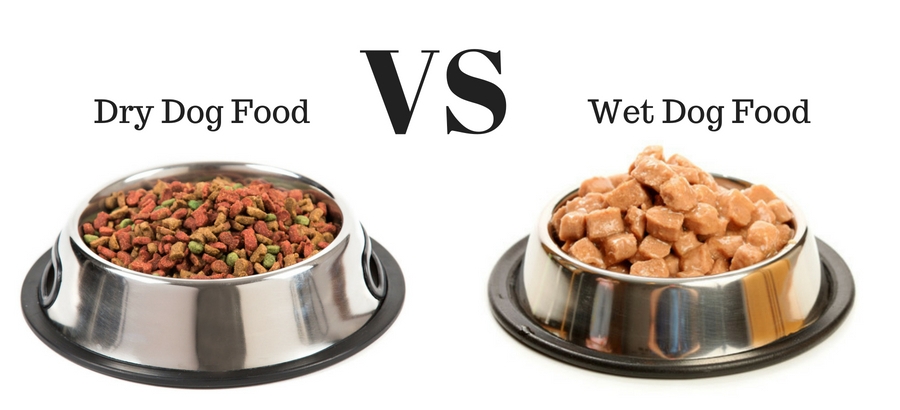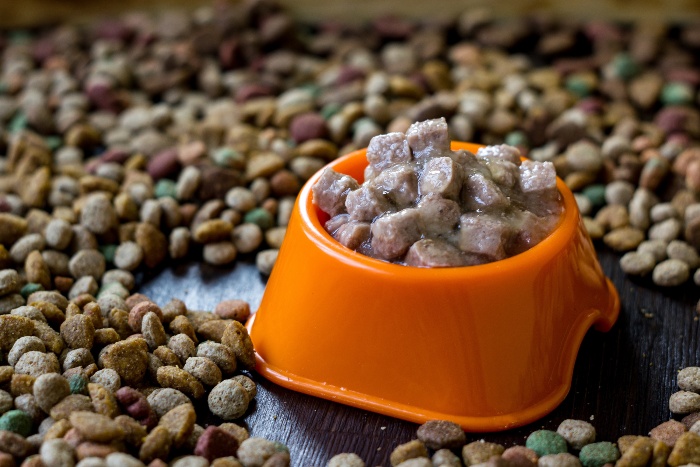There are so many options to choose from when it comes to feeding our pet dogs. You can choose dry food, more commonly known as Kibble, or you can feed them wet canned food. If you don’t want to feed them either, you can choose to make your dog’s food at home yourself.
As pet owners, we’re always on the quest to find the best food to give to our pet, and one major factor we consider when choosing food is how healthy it is for our pets, and the second factor that comes into play is how economical the food is.
Where we talk about dog food, there is a huge debate on which kind of food is healthier: wet or dry. Some people feed their dog’s Kibble, only believing that it is the perfect diet for their dogs, while some believe wet canned food has all the nutrients. Others give their dogs a mix of both kinds of food in hopes of striking a balance.
Is there a right answer to this debate? We’ll leave that up to you to decide. We will, however, layout all the information you should know when making your own decision.
The Advantages of Dry Food:

For Kibble to be so popular amongst dog owners, there has to be a bunch of positives attached to it.
To start with, Kibble has high energy content, which means only a small amount of Kibble will satisfy your dog and keep him full and playful. This also means it’s a more economical option since it doesn’t finish up sooner than your wallet fills up. Kibble is also easy to measure out during mealtimes. You can easily and accurately portion the Kibble to maintain a healthy diet.
It is also highlighted that spending on Kibble is environmentally friendly since only a limited amount is needed, and thus fewer packets are produced and thus less packaging and plastic.
Another benefit of Kibble is that it is convenient. Dry food is not messy at all. You don’t have to worry about gravy spills or mushed-up food that came under your feet. At best, if anything falls outside the bowl, it can easily be swept up or vacuumed. You also get odorless food, so you don’t have to hold your breath to avoid the nasty smell every time you feed your fur buddy.
Dry food is also easy to carry and easy to store. You can easily kibble when you take your dog out in case; they feel hungry. It is also easy to store at home, so you can easily stock up on it for a long period without it doesn’t go well, as long as it is used within the expiry date.
Kibble is designed to maintain dental hygiene for your canine. Since dogs often end up with gum and teeth problems, this is the simplest way to tackle dental issues.
Dry Food Disadvantages:

However, there is a reason for the long-drawn-out debate, and that is because where dry food has its advantages, it also has a few drawbacks.
For starters, to maintain its shape Kibble is made with low-fat content and high carb content. Active dogs will have a higher need for fat than kibble offers.
Secondly, where Kibble is excellent for the teeth, it may be bothersome for dogs with existing dental problems. And it’s not just dental problems, but the facial structure of certain dogs may make eating kibble difficult for them.
Wet Food Advantages:
It is more likely that your dog shows a greater inclination to wet food for the simple reason that it is packed with comparatively more flavor and holds more resemblance to the meat that dogs enjoy.
Wet food has a higher amount of moisture as opposed to Kibble and is essential for dogs who suffer urinary tract infections or for those dogs who aren’t too fond of drinking water. The water content fills your furball up, making them feel satisfied and not take in extra unnecessary calories. So wet food keeps your dog on a diet without depriving them of anything.
Wet foods also have more protein than dry food. Protein is especially important for young and active dogs to ensure that they are energetic. The activity will encourage muscle growth.
Wet Food Disadvantages:

One major disadvantage of canned food is that once opened; you have to refrigerate it; otherwise, it will go wrong. Even then, you can’t keep it in the fridge for more than two days at best, so a lot of the food (and your money) goes to waste. You also have to be mindful that the food in the bowl doesn’t stay out longer than thirty minutes unless it goes bad.
Wet food doesn’t help with dental hygiene, and in fact, owners will have to pay special attention to it if their dogs eat wet food since the chances of tooth decay are higher.
There is a high amount of fat, protein, and moisture in canned food, leading to upset stomachs, and too much protein can overburden the liver and the kidneys.
Conclusion
Since both wet and dry food has their pros and cons, a simple solution can be to feed them a combination of the two. And it could work as long as your dog doesn’t have any specific health problems. It is always a good idea to consult your vet.
Your dog doesn’t need to accept this combination, and even if he does, it might prove to be too heavy for them to digest and might end up with diarrhea. When you introduce the combination feed, you start small and monitor your dog for signs of problems and proceed from there. As far as the debate is concerned, there is no right answer, and the final decision rests with you.
